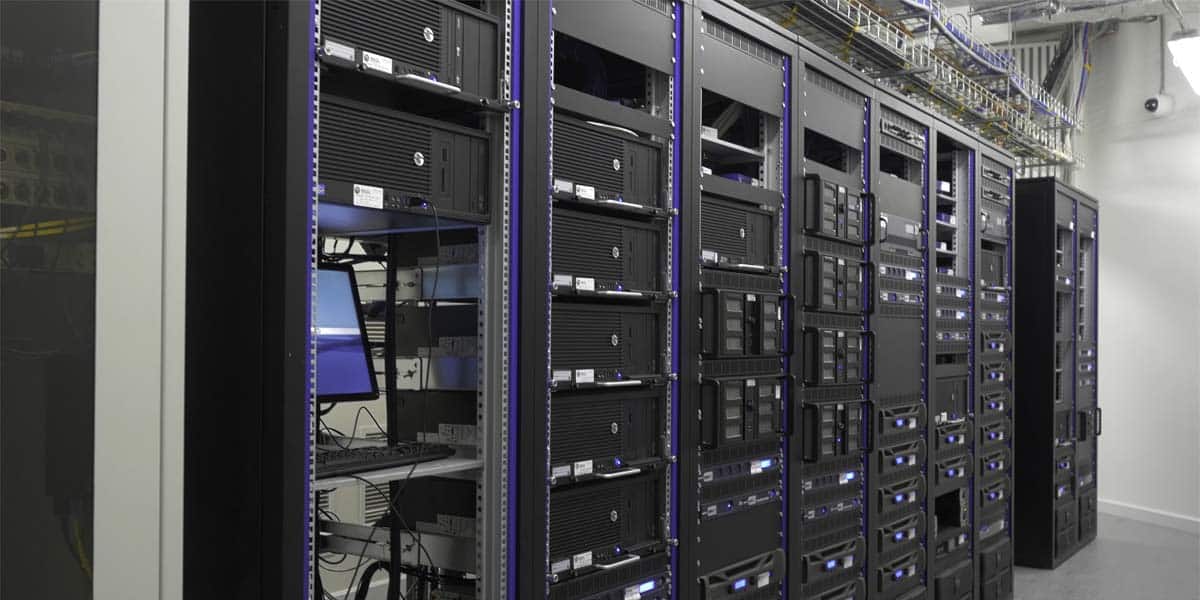
Today’s digital environment, where websites are essential to both personal and professional efforts, has made guaranteeing their security a top priority. WordPress stands out among the different content management systems available, powering close to 40% of all websites globally. Because of its extensive use and popularity, it has unavoidably become a tempting target for bad actors looking to take advantage of flaws.
Protecting your WordPress website from security risks should be your top responsibility as a website owner or administrator. The likelihood of being a victim of a cyberattack may be considerably decreased by being aware of the possible threats and taking preventative action. The purpose of this post is to explain the typical security risks that WordPress websites encounter and to provide workable solutions to help avoid them.
The internet’s dynamic nature presents a wealth of benefits, but it also exposes websites to a wide range of threats. Cybercriminals, automated bots, and hackers come the internet constantly seeking for exploit. These malicious parties may cause chaos by obtaining unauthorized access, resulting in data breaches, website vandalism, or even the use of your website for illegal purposes.
What We Do To Secure Your Website?
We will examine the many security risks that WordPress websites often encounter in the parts that follow, including brute-force attacks, out-of-date software, and weak plugins and themes. You can understand the dangers involved with each threat and take educated action to defend your website if you are aware of them.
We will go into recommended practices that should be taken to strengthen your WordPress security, going beyond simple awareness. We will examine a variety of efficient preventative methods, such as updating your WordPress core and plugins and putting two-factor authentication in place.
We will also discuss user account security advice, hosting suggestions, and crucial security plugins created to improve the security of your website. We will also discuss the equally important components of a strong security strategy—monitoring website activity and developing an incident response plan.
You will have the information and resources necessary to defend your WordPress website from possible attacks by the time you finish reading this post. Keep in mind that securing your internet presence is an investment in its success and durability.
So let’s explore the realm of WordPress security risks and arm ourselves with the knowledge we need to properly protect our digital properties. Together, we can make the internet a safer place and defend our websites against the always changing cyberthreat scenario.

Common WordPress Security Threats
Since WordPress is the most popular content management system worldwide, hackers and cybercriminals pay close attention to it. It’s critical to comprehend the many security risks that WordPress websites often encounter in order to safeguard your website effectively. A successful assault may have catastrophic consequences, including financial losses and reputational harm. Therefore, strengthening the defenses of your WordPress website is not a choice but rather a need. Following are some of the most common wordpress security threats that you should consider.
1: Brute force attacks
Brute force attacks are one of the simplest but most common techniques used by hackers to enter WordPress sites without authorization. Malicious actors employ automated tools in these assaults to test a large number of login and password combinations before settling on the best one. Hackers take advantage of this weakness since many users often choose weak passwords or utilize the default login information. Website owners may install login attempt restrictions, which shut off an IP address after a certain number of unsuccessful login attempts, to avoid brute force attacks. Additionally, promoting the usage of robust, complicated usernames and passwords may greatly lower the likelihood of successful brute force assaults.
How to Prevent: Website owners should enforce strong password restrictions, restrict login attempts, and think about adding two-factor authentication (2FA) to offer an additional layer of protection to guard against brute force assaults.
2: Cross-Site Scripting (XSS)
When attackers insert malicious scripts into web pages that other users are seeing, a serious vulnerability known as Cross-Site Scripting (XSS) results. These scripts have the ability to steal private data, lead users to dangerous websites, or carry out unwanted tasks on the user’s behalf. When websites don’t thoroughly check user inputs or sanitize data before presenting it to consumers, XSS vulnerabilities occur.
How to Prevent: Website operators should enforce strong input validation and sanitize user-generated material to avoid XSS attacks. An additional line of defense against such attacks may be added by using security plugins that provide XSS protection.
3: SQL Injection
By inserting malicious SQL code into input fields, SQL injection is a risky vulnerability that enables attackers to change a website’s database. Attackers may access, change, or destroy sensitive data kept in the database with the aid of a successful SQL injection. This kind of vulnerability arises when websites process user inputs without the usage of prepared statements or parameterized queries.
How to Prevent: Website administrators should utilize secure coding techniques, such as prepared statements and escaping user inputs, to protect against SQL injection. Additionally, it might be useful to find and fix any SQL injection issues by routinely upgrading and inspecting plugins and themes.
4: File Inclusion Exploits
When hackers use insecure file inclusion techniques to run illegal code on a website, file inclusion exploits are the result. The execution of malicious programs or the release of private files may result from this. Vulnerabilities related to file inclusion are often caused by incorrect processing of user input.
How to Prevent: Website owners should evaluate user inputs and make sure that file inclusion is restricted to trustworthy locations in order to prevent file inclusion attacks. Unauthorized file execution may be avoided by putting access restrictions in place and employing secure coding techniques.
5: Unreliable Theme and Plugin Sources
Using themes and plugins that were downloaded from unreliable sources might put websites at risk for security issues. Themes or plugins may include malicious code that is distributed via unauthorized channels by malicious actors.
How to Prevent: Website owners should only obtain themes and plugins from reliable developers or official repositories in order to prevent this issue. Audit installed themes and plugins on a regular basis for any unusual activity. Avoid unnecessary installation for unknown themes and plugins.
6: Using Outdated Software
Using outdated software exposes your website to known security risks. It includes running obsolete versions of WordPress core, themes, or plugins. Updates from developers often come with security patches and bug fixes. Ignoring these upgrades puts your website at risk of attack. Hackers regularly seek out websites that have not updated their software since they are fully aware of the dangers brought on by old software. It’s crucial to maintain your WordPress installation, themes, and plugins updated to reduce this danger.
How to Prevent: Website owners must update their WordPress installation, themes, and plugins often to be safe against known vulnerabilities in order to resolve this issue.
7: Unprotected Admin Area
A vital access point for controlling the website is the WordPress admin area. If the admin section is not protected, unauthorized users may get access and take over the whole website.
How to Prevent: Website administrators should use strong passwords, restrict access to approved individuals, and think about utilizing IP whitelisting to prevent certain IP addresses from gaining access to the admin area.
8: Weak User Permissions
Giving users too many rights or neglecting to limit their access might result in security lapses. Weak user permissions might be used by hackers to take over the website and its confidential information.
How to Prevent: Based on each user’s duties, website administrators should examine and give the proper user roles and permissions. Users only have access to the resources they really need according to the least privilege concept.

9: Insecure Hosting Environments:
Hosting your WordPress website in an unsecured environment or on a shared server increases the chance of security breaches. With shared hosting, other websites on the same server might compromise the security of your website.
How to Prevent: Choose a trustworthy hosting service that provides strong security features, such as firewalls, frequent backups, and DDoS protection, to reduce this risk.
10: Lack Of Regular Website Backup
Regular backups are an indispensable aspect of WordPress website security. Neglecting this essential practice can lead to severe consequences, including data loss, financial implications, and damage to your online reputation. By implementing a robust backup strategy and adhering to best practices, you can safeguard your website’s data, minimize downtime, and ensure quick recovery in the face of unexpected challenges. Remember, investing in regular backups is investing in the resilience and stability of your WordPress website. If you don’t routinely backup your website, you run the risk of losing data in the event that a successful attack or server failure occurs.
How to Prevent: Establishing a regular backup schedule can help website owners make sure that all of their data, files, and databases are safely stored elsewhere. With this routine, an incident may be recovered from quickly without loosing important data and information.
Website owners may dramatically improve their website’s resistance to possible cyber attacks by being aware of these frequent WordPress security issues and taking preventative action. Continually evaluating and enhancing security procedures is a commitment to preventing damage to the website and its visitors.
Conclusion
WordPress is a popular content management system, making it a target for hackers. You can strengthen your website’s security and secure your data with knowledge and proactive methods. This article covered WordPress security risks. Each vulnerability presents new obstacles, from brute force assaults to obsolete software and insecure plugins/themes. An successful defensive plan starts with understanding these dangers.
Preventing Cross-Site Scripting (XSS), SQL injection, and file inclusion exploits, which might have dire implications, was discussed. Website owners may reduce these dangers by using secure code, input validation, and strong security plugins. We also stressed the significance of safeguarding the WordPress admin area, configuring user permissions, and using reliable hosting. These components boost website security.
Let’s defend our digital domains to make the internet safer. This post will help you secure WordPress and effectively manage cybersecurity. Let’s work hard for digital security and resilience. We can protect our websites, sensitive data, and users’ online experience by working together.
